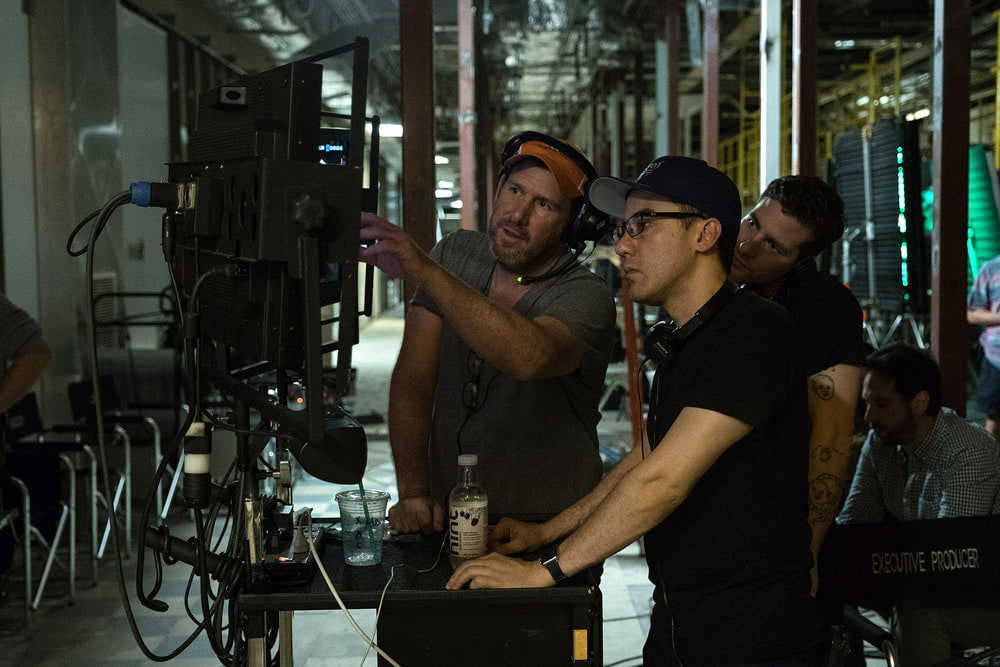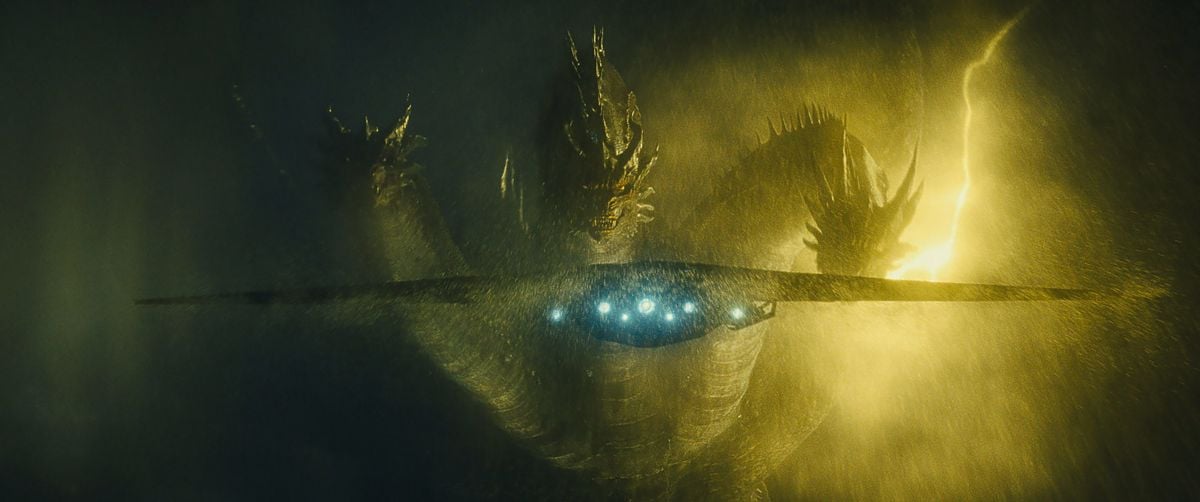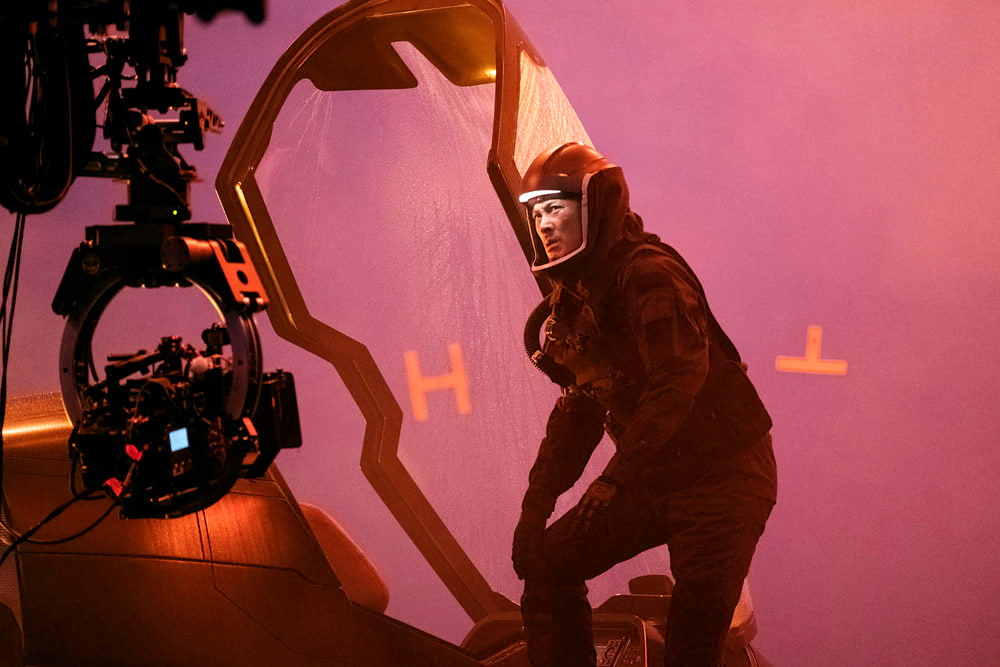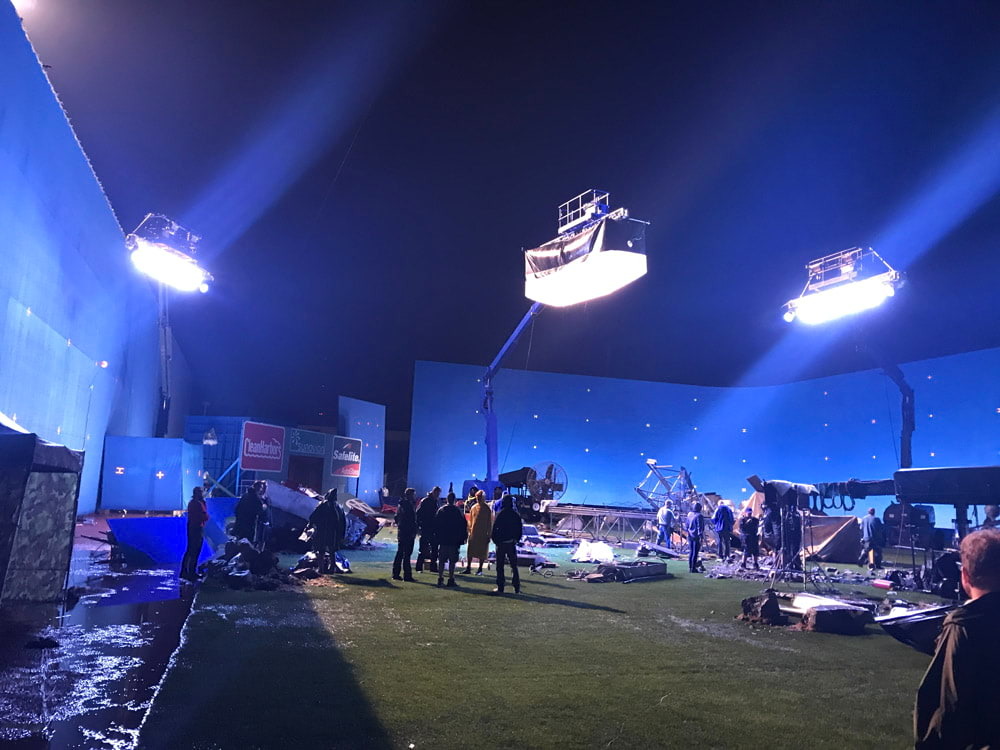Mothra, Rodan and King Ghidorah join this kaiju melee directed by Michael Dougherty and shot by Lawrence Sher, ASC.
Đang xem: Godzilla: King Of The Monsters
Unit photography by Daniel C. McFadden and Wallace Michael Chrouch. All images courtesy of Warner Bros. Pictures.

At top, the eponymous Titan asserts his dominance inGodzilla: King of the Monsters. This article first appeared in AC June 2019. Some images are additional or alternate.
He’s back, he’s angry, and he’s got company.
In Godzilla: King of the Monsters, human actions trigger the reappearance of the titular “Titan,” who was last seen returning to the sea after saving San Francisco. But other legendary monsters also have been roused — the insect-like Mothra, the pteranodon Rodan, and the three-headed dragon King Ghidorah — each of whom is devastatingly powerful. As these behemoths vie for supremacy, the human world becomes collateral damage.
The Monarch organization, which has long tracked the beasts, hopes to contain the threat. Dr. Emma Russell (Vera Farmiga) has developed technology to communicate with — and potentially control — the Titans. While she seeks a peaceful resolution, her ex-husband, Dr. Mark Russell (Kyle Chandler), has personal reasons for a more hawkish approach. First, though, he must rescue Emma and their teenage daughter Madison (Millie Bobby Brown) from a shady group with its own agenda.
Director Michael Dougherty describes himself as a lifelong fan of the franchise, and he relished the opportunity to make what he calls his “dream Godzilla movie.” Though King of the Monsters continues the story from 2014’s Godzilla — directed by Gareth Edwards and shot by Seamus McGarvey, ASC, BSC (AC June ’14) — Dougherty strove to give audiences something different. “We had to up our game,” says Dougherty, who co-wrote the script with Zach Shields. “One of the rules of sequels is to go a bit bigger and bolder with each chapter. Thankfully we have four giant monsters, so it was easy to go bigger.”
King of the Monsters marks the first collaboration between Dougherty and cinematographer Lawrence Sher, ASC. Sher came to the project following his directorial debut, the feature comedy Father Figures. “That was an incredible experience that I enjoyed immensely,” Sher says. “Directing made me feel inspired again to shoot — and to shoot something challenging and different then I had done before.”

Cinematographer Lawrence Sher, ASC (left) and director Michael Dougherty confer at a monitor.
Specifically, Sher was looking to dive into blockbuster action after having built a cinematography résumé that was dominated by comedies such as The Hangover and its two sequels. He knew that making the transition might take some convincing, but working in his favor was the additional photography he did on the 2014 Godzilla. “That was a good experience, and it dipped my feet into that world,” Sher reflects. “Perhaps it also allowed
Sher quickly won over Dougherty. “He came in with a look book of frames from films — some sci-fi, some not — that he felt captured what this movie could look like,” the director recalls. “I had already collected some of the same ones. It was one of those eerie moments of synchronicity, when you feel a connection right away. We spoke the same visual language, and I knew we would see eye to eye.”
Blade Runner (AC June ’82) was a prominent reference. “That’s a gorgeous science-fiction film, never surpassed in terms of aesthetics,” the director says. Alien (AC Aug. ’79) was also an influence, as were its sequels Aliens and Alien3 (AC Dec. ’92). “There is a moody and grounded quality in those films that we wanted to bring back,” Dougherty continues. “Those filmmakers weren’t afraid of shadows and grain. I miss the atmospherics and texture of those films. As we start to embrace digital, I worry the image is getting too clean and perfect all the time, which takes away from the tension you can build with darkness and shadow and splashes of light.”

King Ghidorah stares down the Argo, a super-sized stealth bomber. Several vendors collaborated on the design of the creatures, who are supposed to measure as high as 400' tall. Among the vendors was special-effects house Amalgamated Dynamics Inc. — headed by Alec Gillis and Tom Woodruff Jr. — whose artists designed Rodan in clay, which thrilled Dougherty. “Their first stab was a beautiful, huge, sculpted Rodan maquette that took me back to being a kid reading Cinefex and Fangoria and seeing pictures of designers poring over beautiful clay sculpts,” the director says. While the monsters that appear onscreen are entirely digital creations, their movements benefited from motion-capture references that lent an organic quality based on actual real-world physics.
Xem thêm: Bai Toan Va Chạm Mềm Là Gì, GiảI Bã I TáºP VáºT Lã 10
The filmmakers also carried forward visual elements from the previousGodzilla. “We liked how
Despite Dougherty’s concerns regarding overly crisp images, the filmmakers opted to shoot digitally. They consideredArri’s Alexa XTStudio camera, but Sher believed the greater resolution of the large-format Alexa 65 system would better serve the big-scale, effects-heavy movie, which was destined for IMAX screens. The producers agreed.
In keeping with the lastGodzilla— as well asKong: Skull Island, which exists in the same onscreen universe and shot by Larry Fong, ASC — the production elected to work primarily with anamorphic lenses, though the filmmakers recognized that certain visual-effects shots would benefit from being shot with spherical lenses. “Mike and I love the anamorphic look inAlienandClose Encounters of the Third Kind<AC Jan.’78>, and we wanted the feel of

Ken Watanabe as Dr. Ishiro Serizawa.
The lens package includedPanavisionC Series, E Series, G Series and T Series anamorphic primes, as well as a 150mm anamorphic Macro Auto Panatar. For certain long-lens shots the crew also carriedNikon Nikkor300mm and 400mm spherical primes with rear anamorphic adapters; once or twice, Sher estimates, the 300mm was also paired with a 1.4x extender. “We stuck mostly with primes for 90 to 95 percent of the movie,” Sher notes. “Philosophically, we were trying to be close to the actors to keep an intimate and ‘immediate’ relationship. The C 60mm became a much-used lens for us because it had a close-focus of 19 inches, which made it useful for extreme close-ups and handheld
The crew always ran two cameras — A camera was operated by Christopher TJ McGuire, and B was operated by Thomas Lappin — with a third camera added approximately a quarter of the time; Panavision ATZ 70-200mm (T3.5) and ALZ10 42-425mm (T4.5) anamorphic zooms came into play on C camera for select day exteriors. For spherical shooting, the crew used a set of Panavision Primo 70s ranging from 14mm to 80mm. In all cases, the filmmakers framed for a 2.39:1 aspect ratio.
Sher would often shoot at T2.8, and to arrive at that in big night exteriors, he would sometimes raise the camera’s exposure index to 1,600 or 2,000, as in a sequence in which monsters clash at Boston’s Fenway Park. The production built a replica of part of the stadium’s famous “Green Monster” left-field wall and surrounded it with bluescreen, then re-created the rest of the environment with plates and CGI set extensions.

For one of the movie’s outsized action scenes, the production built a partial replica of Fenway Park’s “Green Monster” left-field wall.
“When we knew we needed more depth of field for the creatures, we would bump up to T4 or T5.6,” Sher adds. “We didn’t want a lot of mushiness in the background — in the large format, that can make it feel strained. What might otherwise look out of focus and beautiful at T1.4 or T2 might make the creatures look less real because of their size and proximity to the lens.”
For Steadicam moves in close quarters — such as those in an Osprey military-aircraft interior set and a submarine interior set — the filmmakers would sometimes switch toArri’s Alexa Mini camera. “We also had various security-camera and body-camera shots, for which we usedSony a7 camerasand actual police body cameras,” adds DIT Nicholas Kay. “They all shoot 30 fps, so we had to convert the footage.”
Principal photography spanned June to late September 2017 and took place in and around Atlanta, Ga., with sets constructed atBlackhall Studiosand at an OFS Optics warehouse facility that has been retrofitted for production.
Xem thêm: 【Giải Đáp】 Sau Khi Ăn Nên Làm Gì Để Giảm Cân Nhanh Nhất? ~ Bí Quyết Làm Đẹp
Most scenes required a tremendous amount of interactive light to suggest the atomic bioluminescence of the Titans, each of which emits its own distinguishing palette: blue for Godzilla, red for Rodan, yellow for King Ghidorah, and a mix of pastel yellow and blue for Mothra. The colors were CG-animated as part of the creatures, but also needed to play on the live-action human characters and the physical environments.